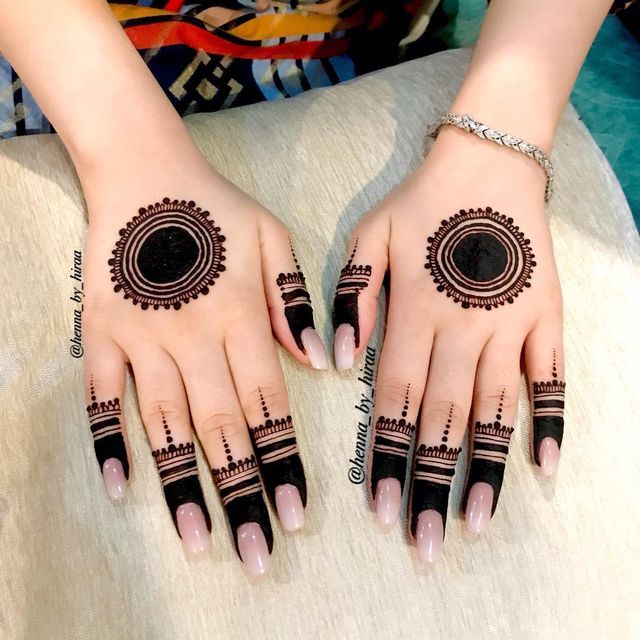Arabic Mehndi designs are known for their bold, flowing patterns and intricate details. Unlike traditional Indian Mehndi, which often features dense, paisley-filled designs, Arabic Mehndi is characterized by its simplicity and elegance. Think of it as the minimalist cousin of Mehndi art—less is more, and every line tells a story.
Whether you’re preparing for a wedding, Eid celebration, or just want to try something new, this guide will walk you through the basics of Arabic Mehndi designs. By the end, you’ll be creating stunning patterns that even your auntie will approve of (and that’s saying something).
What Makes Arabic Mehndi Unique?
Arabic Mehndi designs stand out for their:
- Bold Lines: Thick, flowing lines are the hallmark of Arabic Mehndi.
- Floral Motifs: Large, open flowers and leaves are a common theme.
- Negative Space: Unlike densely packed designs, Arabic Mehndi uses empty space to create balance.
- Simplicity: The designs are often easier to create, making them perfect for beginners.
Tools and Preparation
Before you start, gather these essentials:
- Mehndi Cone: Use a cone with a fine tip for precise lines.
- Practice Paper: Always practice on paper before moving to skin.
- Cotton Swabs: For fixing mistakes (because nobody’s perfect).
- Lemon-Sugar Solution: To darken the stain and make it last longer.
Pro tip: Clean your skin with soap and water before applying Mehndi. Avoid lotions or oils—they’re the arch-nemesis of a good stain.
5 Simple Arabic Mehndi Designs to Try
1. The Classic Floral Wrist Design
Start with a bold line across your wrist, then add large, open flowers and leaves along the sides. This design is elegant and easy to create.
Pro Tip: If your flowers look more like blobs, add some lines inside to give them definition.
2. The Bold Backhand Design
Arabic Mehndi often focuses on the back of the hand. Draw a large flower in the center, then extend bold lines and leaves outward. It’s like creating a sunburst—radiant and eye-catching.
3. The Minimalist Finger Design
For a subtle look, draw bold lines and small flowers on your fingers. This design is perfect for those who want something quick and stylish.
4. The Flowing Vine Design
Draw a thick, curved line from your wrist to your forearm, then add leaves and flowers along the way. It’s like creating a river of art on your skin.
5. The Elegant Anklet Design
Arabic Mehndi isn’t just for hands. Draw a bold line around your ankle, then add flowers and leaves. It’s the perfect accessory for a summer outfit.
Tips for Creating Stunning Arabic Mehndi
- Start with Bold Lines: Use confident strokes to create the base of your design.
- Keep It Simple: Arabic Mehndi is all about elegance, so avoid overcomplicating your patterns.
- Practice on Paper: Before applying Mehndi to your skin, practice your designs on paper.
- Fix Mistakes with a Cotton Swab: Dab away any errors before the paste dries.
Aftercare for Arabic Mehndi
To make your Mehndi last longer:
- Apply a lemon-sugar solution to darken the stain.
- Avoid water for at least 6-8 hours.
- Moisturize the area gently to keep the design from cracking.
FAQ
1. What’s the difference between Arabic and Indian Mehndi?
Arabic Mehndi features bold lines and open designs, while Indian Mehndi is more intricate and densely packed.
2. How long does Arabic Mehndi last?
It typically lasts 1-2 weeks, depending on aftercare.
3. Can I use black henna for Arabic designs?
Avoid black henna—it often contains harmful chemicals. Stick to natural, brown henna.
4. How do I make my Mehndi stain darker?
Apply a lemon-sugar solution and keep the paste on for several hours.
5. What if I make a mistake?
Use a cotton swab to gently remove the paste before it dries.
6. Can I practice Arabic Mehndi on paper?
Absolutely! Practicing on paper is a great way to improve your skills.
7. How do I store leftover Mehndi paste?
Store it in an airtight container in the freezer for up to 2 weeks.
8. Can I use Arabic Mehndi on my feet?
Yes! Arabic Mehndi looks beautiful on both hands and feet.
9. How do I remove Mehndi stains quickly?
Exfoliate the area with a scrub or lemon juice to lighten the stain.
10. Is Arabic Mehndi safe for kids?
Yes, natural henna is safe for kids. Just avoid sensitive areas like the face.
Conclusion
Arabic Mehndi designs are a beautiful way to express yourself, whether you’re celebrating a special occasion or just adding a touch of elegance to your day. With their bold lines and flowing patterns, these designs are perfect for beginners and pros alike. So grab a Mehndi cone, start practicing, and let your creativity flow.
Happy designing!
